Traveling with a cat can often be a stressful experience for both the animal and the owner. Cats are creatures of habit and can become anxious when placed in unfamiliar situations, such as being in a carrier. However, with the right approach, you can help your feline friend stay calm and make the journey as stress-free as possible.
Key Takeaways:
- Learn effective strategies to keep your cat calm in a carrier.
- Discover how to create a relaxed environment for your cat during travel.
- Understand the importance of positive associations to reduce your cat's anxiety.
Preparing the Carrier: A Comfortable Retreat
Before you even think about putting your cat in a carrier, it's essential to make it a comfortable and inviting space. Place a familiar blanket or towel inside the carrier to provide a sense of security. The smells from home will help your cat feel more at ease. Additionally, consider a soft carrier that feels more like a bed than a cage, as cats love cozy spaces where they can sleep and hide.
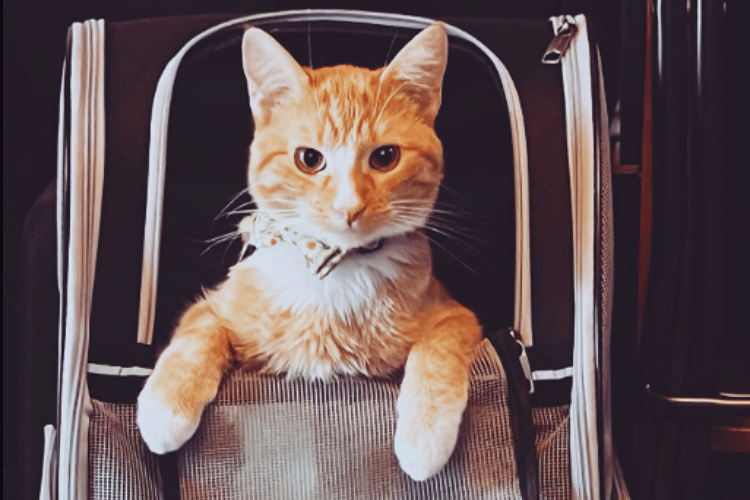
Leaving the carrier out in the house on a regular basis allows your cat to explore it at their own pace. With the door open, your cat can come and go as they please, which helps to build positive associations with the carrier. Placing treats or kitty's favorite toys inside can encourage your cat to view the carrier as a safe and enjoyable space.
On the Move: Creating a Relaxed Environment
When it's time to travel, maintaining a relaxed environment is key to keeping your cat calm. Soft music can have a soothing effect on pets, just as it does on humans. Play some gentle tunes in the car to help drown out the intimidating sounds of traffic and the car door shutting. Additionally, placing the carrier on the floor of the back seat can reduce the sensation of movement, which helps to keep your cat's anxiety at bay.
Speak to your cat in a soothing voice throughout the journey. Your calm demeanor can significantly influence your cat's mood, helping them to stay calm. If your cat loves attention, occasional pets through the carrier's door can reassure them that everything is okay.
The Scent of Comfort: Pheromone Sprays and Catnip
Pheromone sprays are designed to mimic the natural chemicals that cats produce to mark their territory as safe. Spraying the inside of the carrier with a pheromone spray can create a stress-free atmosphere for your cat. For some cats, catnip has a calming effect. If your cat responds well to catnip, consider placing catnip toys inside the carrier to help reduce anxiety.
However, it's important to note that not all cats are affected by catnip, and for some, it can cause overexcitement. Observe how your cat reacts to catnip at home before deciding to use it for travel.
Music and Sounds: The Auditory Path to Calmness
When it comes to easing your cat's anxiety during travel, never underestimate the power of sound. Soft, soothing music or ambient sounds can work wonders in calming a nervous kitty. Just as humans often find solace in the gentle hum of nature or the soft melodies of a favorite tune, cats too can benefit from auditory stimulation. Playing classical music or specially designed pet relaxation tracks can help drown out the intimidating noises of travel, creating a serene bubble within the cat carrier.
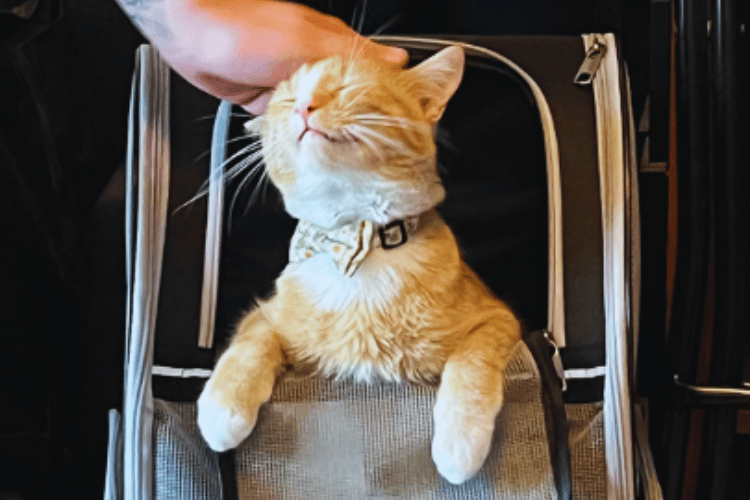
For the animal lover looking to create a stress-free journey for their pet, consider compiling a playlist of calming sounds before hitting the road. Whether it's the gentle purr of another cat, the whisper of leaves in the wind, or the soft strumming of a harp, these sounds can help your cat associate the carrier with peace rather than fear. Remember, each cat is unique, so it might take a few tries to find the auditory cue that works best for your furry friend.
The Role of Soft Carriers in Easing Cat's Anxiety
Soft carriers can be a game-changer when it comes to reducing a cat's anxiety. Unlike hard plastic or metal options, soft carriers often feel more like a cozy bed than a confinement space. The plush walls provide a gentle cushion, which can help your cat feel more secure and less exposed.
When choosing a soft carrier, look for one that's sturdy yet comfortable, and consider placing a familiar blanket inside to add an extra layer of comfort. This can make all the difference for a cat who associates the carrier with stress and uncertainty.
Moreover, the flexibility of soft carriers means they can often be opened at the top as well as the front, offering a less intimidating way for your cat to enter and exit. This can be particularly helpful for cats who are afraid of being forced into a tight space. Allowing your cat to explore the carrier at their own pace, perhaps by placing treats or food inside, can help them associate it with positive experiences. Over time, this can significantly reduce their anxiety and make travel a much more stress-free endeavor.
Integrating Play Time to Alleviate Stress During Travel
Incorporating play time before a journey can greatly contribute to a stress-free experience for your cat. Engaging your kitty with their favorite toys prior to placing them in the carrier can help burn off excess energy and induce a calmer state. This can be especially beneficial for kittens who have boundless energy and may otherwise spend the trip trying to escape or claw at the carrier. A good play session can tire them out so that they're more inclined to rest once they're inside the carrier.
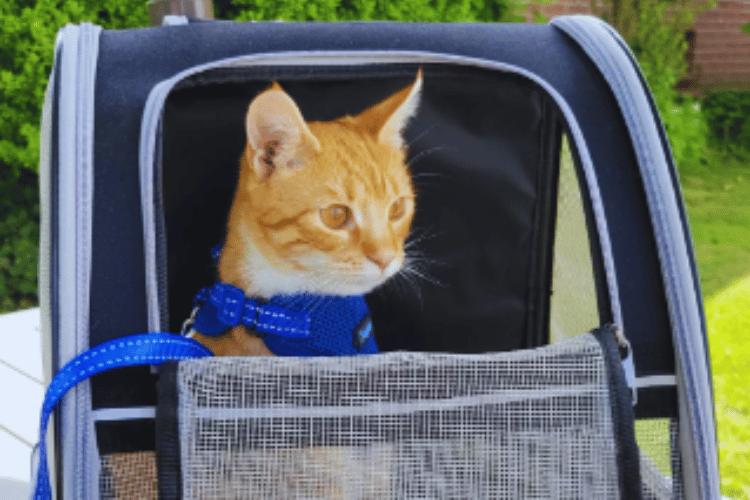
Additionally, play time serves as a distraction from the upcoming event and can create positive associations with the carrier. If your cat helps you "hunt" a toy that mysteriously finds its way into the carrier, they're more likely to follow it in without fear.
This tactic can turn the carrier into an extension of their play area, rather than a signal that it's time to visit the vet or move to an unfamiliar environment. Remember, a relaxed cat is less likely to feel sick or anxious during travel, making life easier for both pet and owner.
The Comfort of Familiarity: Bringing Home Inside the Carrier
Cats are creatures of habit, and they take great comfort in the familiar. To help reduce your cat's stress levels while in the carrier, consider incorporating elements from home that they're already fond of.
This could be a blanket that smells like their favorite spot on the couch or one of the kitty's favorite toys. The scent and presence of these familiar items can provide a sense of security and continuity for your cat, making the carrier feel less like a cage and more like a safe haven.
Moreover, for cats that are particularly attached to their owners, an item of clothing that smells like you can be incredibly comforting. A soft t-shirt or a small towel that you've used can be placed inside the carrier to help your cat feel less alone. This simple tip can make a significant difference in transforming the cat carrier into a cozy retreat, rather than a place of isolation.
By bringing a piece of home along for the ride, you're sending a clear message to your cat: they are safe, loved, and not so far from the comforts of home after all.
The Power of Routine: Practice Makes Perfect
Getting your cat accustomed to the carrier involves practice. Start by placing your cat in the carrier for short periods while at home. Gradually increase the time they spend inside, and try carrying them around the house to simulate movement. This practice can help your cat get used to the sensation of being in a carrier and make the actual trip to the vet or elsewhere less daunting.
During these practice sessions, always ensure that your cat has access to their litter box once they're out of the carrier. This helps to prevent any negative associations with being confined and unable to reach the bathroom.
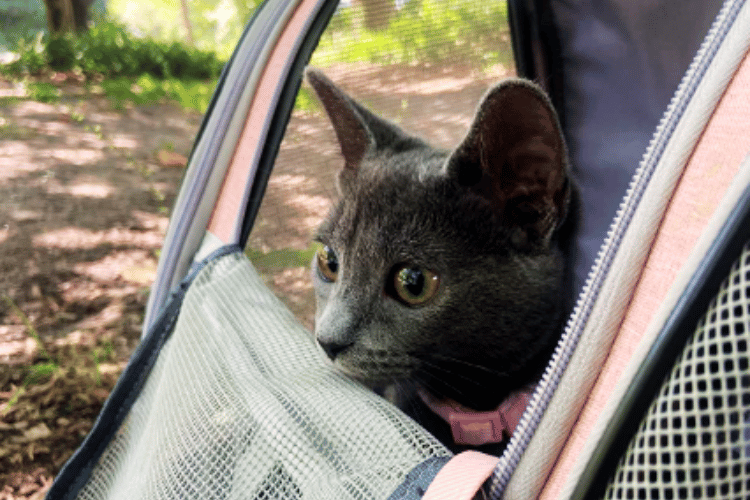
Treats and Play: Positive Reinforcement
Positive reinforcement is a powerful tool when it comes to training cats. Offering treats when your cat enters the carrier voluntarily or after a calm car ride can reinforce good behavior. Playtime after a successful carrier experience can also create positive associations, making your cat more likely to enter the carrier without resistance in the future.
Remember, the goal is to make the carrier a place where your cat feels safe and secure, not a space they associate with fear or stress.
The Vet Visit: Minimizing Stress
Vet visits can be particularly stressful for cats. To make the experience as smooth as possible, try to create a stress-free environment in the waiting room. Keep the carrier on your lap or on a chair next to you rather than on the cold floor. Covering the carrier with a blanket can provide additional privacy and help your cat feel hidden, which can reduce stress.
If your cat becomes stressed easily, speak to your veterinarian about the possibility of using medication to help calm them down. However, medication should be a last resort and only used under the guidance of a professional.
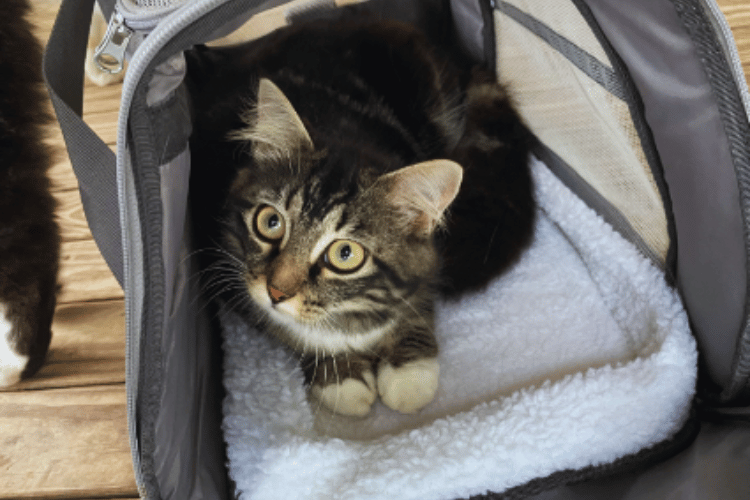
After the Trip: Ensuring a Peaceful Return
Once you return home from your trip, it's important to let your cat out of the carrier in a safe, quiet space. If you have other pets, especially dogs, make sure they are not around to overwhelm your cat as they exit the carrier. Allow your cat to come out on their own terms and give them time to readjust to their familiar environment.
Summary
Calming a cat down in a carrier involves preparation, creating a relaxed environment, using comforting scents, practicing routine, positive reinforcement, and careful handling during vet visits. By following these tips, you can help reduce your cat's anxiety and make traveling a more pleasant experience for both of you.
FAQ Section
How can I make my cat's carrier more appealing?
Make the carrier comfortable by adding a familiar blanket or towel, leave the door open for your cat to explore, and place treats or toys inside to create positive associations.
What should I do if my cat is still stressed during car rides despite my efforts?
Consult with your veterinarian about the possibility of using calming medication or other strategies tailored to your cat's specific needs.
Can I use catnip to calm my cat in the carrier?
Catnip can have a calming effect on some cats, but it's important to first test how your cat reacts to it at home. If catnip makes your cat more agitated, it's best to avoid using it during travel.
Thank you for visiting LegitLists we hope this helps you make a legitimate choice!






